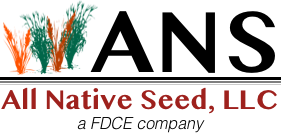
Pollinators are the unsung heroes of agriculture, playing a critical role in food production and ecosystem health. Bees, butterflies, birds, and other pollinators contribute to the productivity of a wide range of crops, from fruits and vegetables to nuts and oilseeds. Creating habitats that support these essential species not only benefits the environment but also provides substantial economic rewards for farmers and landowners. In this post, we’ll explore how pollinators drive agricultural productivity and the financial advantages of establishing pollinator-friendly habitats.
Pollinators: The Backbone of Agricultural Productivity
Pollinators are responsible for transferring pollen from one flower to another, enabling plants to produce fruit, seeds, and the next generation of crops. It’s estimated that over 75% of leading global crops depend on pollination, and in the U.S. alone, pollinators contribute nearly $20 billion to crop production annually. Key crops like apples, almonds, blueberries, and strawberries rely heavily on pollinators, making them crucial for both local and national economies.
Without pollinators, farmers would face reduced crop yields, smaller fruits, and in some cases, complete crop failure. The presence of healthy pollinator populations directly influences the quantity and quality of produce, helping farmers meet market demand and sustain profitable operations.
The Financial Benefits of Creating Pollinator Habitats
Establishing pollinator habitats on agricultural land is not only an ecological investment but also a smart economic decision. By dedicating areas to pollinator-friendly plants and native grasses, farmers and landowners can create an environment that attracts bees, butterflies, and other beneficial species. This approach leads to several financial benefits:
Increased Crop Yields and Quality
Studies show that fields with adjacent pollinator habitats experience higher crop yields due to the presence of abundant pollinators. Improved pollination also enhances the quality of produce, resulting in larger, better-formed fruits and vegetables that command higher prices in the market. For crops with high dependency on pollination, even small increases in pollinator presence can significantly boost productivity and profitability.
Reduced Dependency on Commercial Pollination Services
Many farmers rent commercial bee hives to ensure pollination for certain crops, especially during peak blooming periods. Establishing natural pollinator habitats reduces the need for rented hives, saving farmers the expense of commercial pollination services. Over time, a sustainable habitat can provide a reliable, cost-effective source of pollinators, lowering operational costs.
Enhanced Resilience and Stability of Farming Operations
A diverse pollinator population increases the resilience of farming operations. When natural pollinators thrive on the land, farmers are less vulnerable to fluctuations in commercial pollination availability and rising costs. This stability is particularly valuable in regions where pollinator populations face stress from habitat loss, pesticide exposure, and climate change. Investing in pollinator habitats can help future-proof agricultural operations against these challenges.
Creating Pollinator Habitats: An Investment with Lasting Returns
Planting native grasses and wildflowers tailored to pollinators’ needs creates an inviting environment for bees, butterflies, and other beneficial insects. Native plants, like those provided by All Native Seed, offer the ideal mix of nectar and pollen sources while being resilient to local climate and soil conditions. Here are a few tips for creating effective pollinator habitats:
Plant a Variety of Native Species: Different pollinators are active at various times of the year. A diverse seed mix with a range of flowering plants ensures food availability throughout the growing season, supporting pollinators and enhancing biodiversity.
Provide Shelter: Pollinators need places to rest and nest. Native grasses, shrubs, and wildflowers create natural shelter for pollinators, helping them thrive and increasing their presence in adjacent crop fields.
Minimize Pesticide Use: Reducing pesticide applications in pollinator habitats preserves the health of pollinators and supports their long-term survival, making the habitat a sustainable resource for agriculture.
All Native Seed: Supporting Pollinator Habitats for Agricultural Success
At All Native Seed, we understand the vital role that pollinators play in agriculture, and we’re committed to providing the best seed mixes to support pollinator-friendly habitats. Our native grass and wildflower seeds are specifically designed to create habitats that attract and sustain pollinators, enhancing both agricultural productivity and ecosystem health.
With our expertise and high-quality, regionally adapted seed, farmers and landowners can establish resilient, thriving habitats that support pollinators year-round. By investing in pollinator habitats, you not only contribute to biodiversity but also boost the productivity and profitability of your land.
A Win-Win for Farmers and the Environment
Pollinators are essential for the success of countless crops and creating habitats that support their survival offers significant economic advantages. From increased yields and quality to reduced costs and greater operational stability, pollinator habitats represent a win-win solution for agriculture and the environment. If you’re ready to maximize the economic impact of pollinators on your land, contact All Native Seed today. Let us help you design and establish a pollinator-friendly habitat that benefits both your crops and your bottom line.
